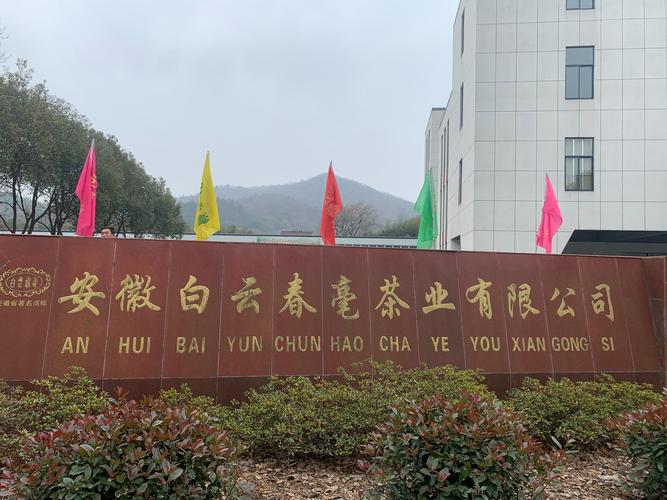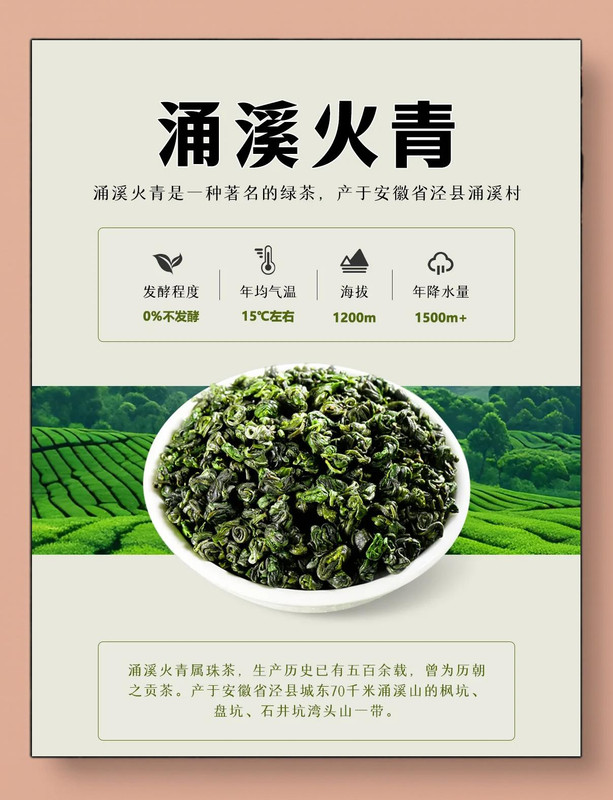Nestled in the mist-clad peaks of Anhui Province’s Lu’an City, 白云春毫 (Baiyun Chunhao), or “White Cloud Spring Bud,” has emerged as a modern tribute to China’s storied tea heritage. Created in the 1970s, this green tea combines the delicate artistry of historic craftsmanship with the boldness of contemporary innovation, earning acclaim as one of Anhui’s “Ten Famous Teas.”

Origins & Cultural Tapestry
Baiyun Chunhao’s story begins in 1978, when tea masters in Lu’an—inspired by the region’s historic Huangshan Maofeng—experimented with plucking standards and shaping techniques to create a tea that captured the essence of spring. The result was a brew so visually striking and aromatic that it quickly gained national recognition, winning gold medals at China’s 1982 and 1986 Tea Expos. Today, it symbolizes the revival of Anhui’s tea culture, blending tradition with modern creativity.
Terroir: Where Mist Nurtures Flavor
The tea grows in a microclimate shaped by Lu’an’s 600-meter elevation, where:
- Climate: Annual rainfall exceeds 1,500mm, with fog enveloping the slopes 180 days a year. Spring temperatures hover between 12–18°C, ideal for slow bud development.
- Soil: Reddish-brown loam enriched by decaying vegetation and quartz particles, imbuing the tea with a mineral undertone.
- Cultivars: The local “Lu’an Dabaicha” variety, prized for its thick, downy buds, forms the tea’s backbone.
Craftsmanship: From Leaf to Modern Art
Plucked from mid-March to early April, only the youngest bud and one adjacent leaf are harvested. The four-step production includes:
- Withering (摊青): Leaves are spread on bamboo trays for 4–6 hours to reduce moisture.
- Pan-Frying (杀青): Leaves are tossed in iron woks at 130–140°C to halt oxidation, preserving their emerald freshness.
- Shaping (做形): Artisans use finger pressure to roll the leaves into slender, needle-like strips, resembling silver hooks.
- Baking (烘干): A two-stage drying process—first at 110°C to fix shape, then at 60°C to enhance fragrance—yields a moisture content below 5%.
Aesthetic & Sensory Journey
- Dry Leaf: Slender, jade-green strips adorned with silver trichomes, resembling dew-kissed pine needles.
- Infusion: Brewed at 85°C, the liquor transforms into a golden jade, with leaves unfurling like blooming orchids.
- Aroma: Dominant notes of fresh chestnut and orchid, with a lingering sweetness.
- Mouthfeel: Medium-bodied with a brisk astringency that mellows into a honeyed aftertaste, leaving a refreshing coolness in the throat.
Grading & Value
Baiyun Chunhao is classified into three grades:
- Special Grade (特级): Uniform strips, dense silver down, priced at ¥800–¥1,200/500g.
- Grades 1–2: Include slightly larger leaves, with prices ranging from ¥300–¥600/500g.
Spring harvests command premiums, while autumn batches offer budget-friendly options.
Brewing Rituals
To honor its complexity:
- Teaware: Use glass or white porcelain to admire the “silver hooks” unfurling.
- Ratio: 3g tea to 150ml water (1:50 ratio).
- Infusions:
- First steep: 1 minute (awakens the leaves).
- Subsequent steeps: Add 30 seconds per infusion (up to 5 times).
Authenticity & Health
Counterfeits often lack the tea’s signature “silver-tipped” appearance and orchid aroma. Genuine Baiyun Chunhao:
- Visual Check: Leaves should be uniformly green with silver tips.
- Cold Brew Test: Steep 1g in 50ml cold water; authentic leaves sink gradually, releasing a sweet aroma.
Beyond its cultural cachet, the tea offers:
- Antioxidant Power: Rich in EGCG, it combats free radicals linked to aging and cancer.
- Metabolic Boost: Caffeine and L-theanine synergize to enhance focus without jitters.
- Digestive Aid: Traditionally used to alleviate bloating after heavy meals.
Legacy & Modernity
Baiyun Chunhao’s creation in the 1970s merged ancient wisdom with modern aesthetics. Today, artisans experiment with floral infusions—jasmine or osmanthus—while preserving the classic “spring bud” aesthetic. As a UNESCO-recognized cultural heritage product, it remains a bridge between China’s past and its dynamic tea scene.
From imperial courts to contemporary teacups, 白云春毫 endures as a testament to Anhui’s terroir—a living poem written in jade and mist.



